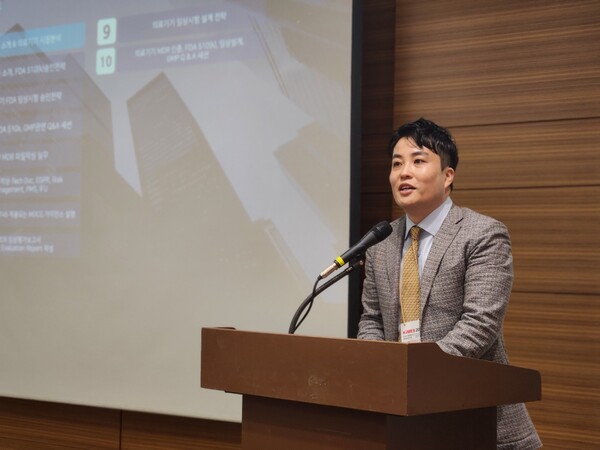With the Korean biotech industry trying to leave its global footprint, the KIMES conference this year paid attention to this trend and invited many guests to speak on the regulations and clinical environment of some of the biggest medical markets including the U.S., EU, and Australia.

The Korea International Medical & Hospital Equipment Show (KIMES) is one of Korea’s largest seminars and exhibitions for medical device companies held annually, attracting visitors from Korea and the world.
This year 1,300 companies participated in the 45,000-square-meter space at the COEX Exhibition Center in southern Seoul.
On the second day of KIMES on Friday, experts across wide expertise such as quality assurance, business development, marketing, regulatory affairs, and clinical development gathered for this daylong event on registration strategy and clinical trial plans for entering the U.S. and the EU.
KBIO Solutions CEO Kang Kyung-yoon said, “I believe Western companies view Korea as a very attractive market because hospitals are concentrated in the metropolitan area which is good for business but there is still a lot of work for Korean companies to successfully enter the U.S. and EU markets.”
He started by introducing the medical device market highlighting the top 10 medical device companies in 2022 where Medtronic, Abbott, and Johnson and Johnson occupied the top three spots. He also referenced a report from the Korea Health Industry Development Institute (KHIDI) which showed the top five markets for medical devices -- the U.S, Germany, Japan, China, and France.
“Although China and the U.S. vie for the largest GDP, China is still far behind the U.S. in medical devices and currently accounts for 40 percent of the global medical device market,” said Kang.
Drawing attention to the domestic market, he noted that the Korean medical device balance trade was in a deficit because it imports a lot of medical devices from global companies. At the same time, he highlighted growth in the market based on a 2022 report which showed a 27.1 percent increase in the production of medical devices in 2021 leading to a subsequent 26.1 percent increase in medical exports that same year.
“I see a lot of innovations happening in Korea’s medical device industry but now I think more effort needs to be put into translating these innovations into sales,” said Kang. “I think a huge barrier lies in getting FDA and EU approvals.”
He laid out the licensing and QSR requirements for entry into the U.S. market.
“Although the FDA doesn't require GMP certification for granting 510(k) certificates for grade 2 medical devices, they still expect companies to fulfill this requirement and therefore, GMP certification should not be overlooked,” stressed Kang. “However, grade 3 medical devices usually undergo GMP audits during post-market approval.”
However, he noted that the 510(k) document basically certifies that your product is on par with another product that is already launched in the U.S. In this regard, he admitted it can be difficult to sell your medical device if it appears too similar to a previously launched product.
He proposed a strategy for differentiation products after receiving the 510(k) certification.
“Companies should strive to align the technology of the new medical device to an existing one with similar working principles. However, the overall technology of the new medical device would still differ from the existing device,” he explained.
In this way, companies will not be forced to strictly equate their devices to existing products just for obtaining the 510(k) certificate and can more easily market the product later, he advised.

